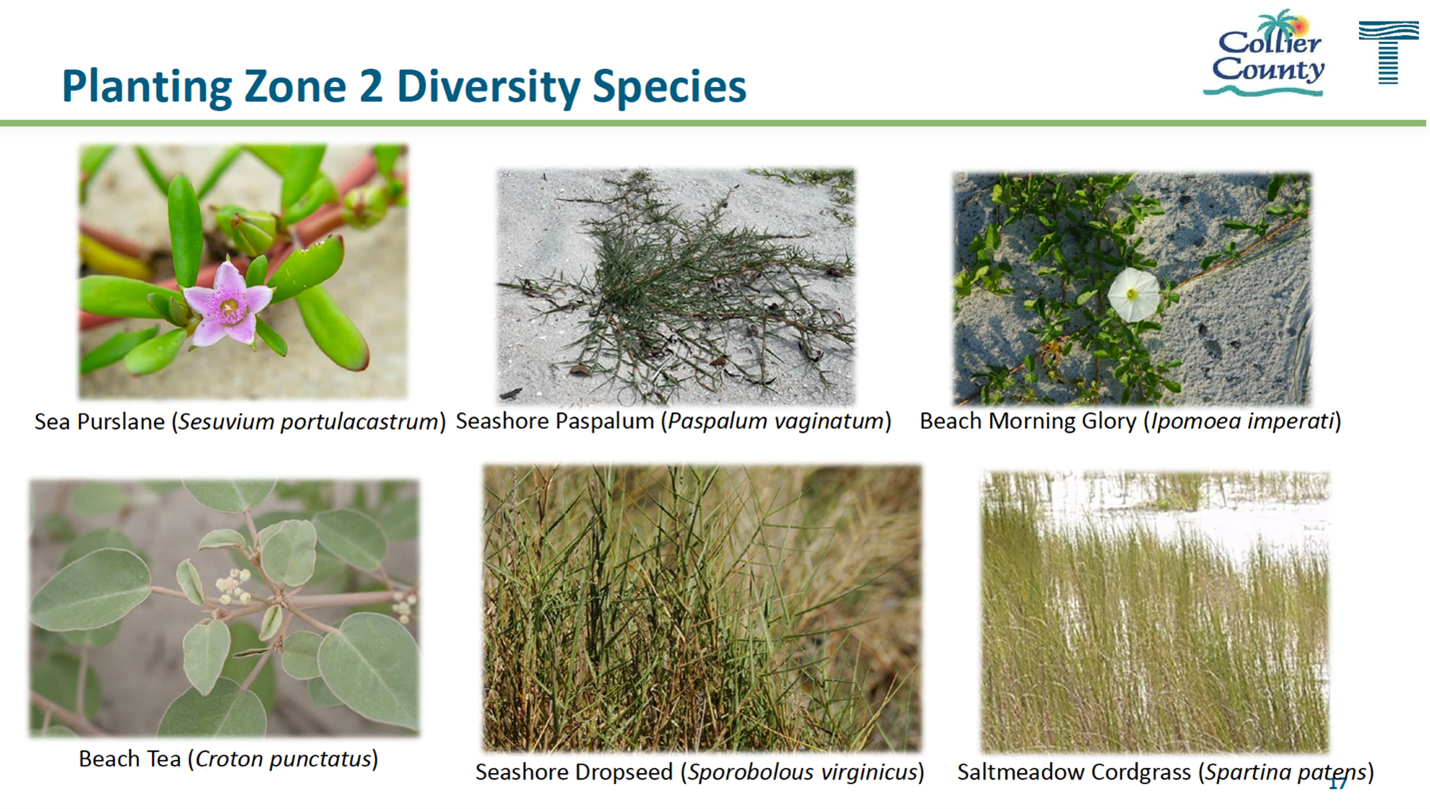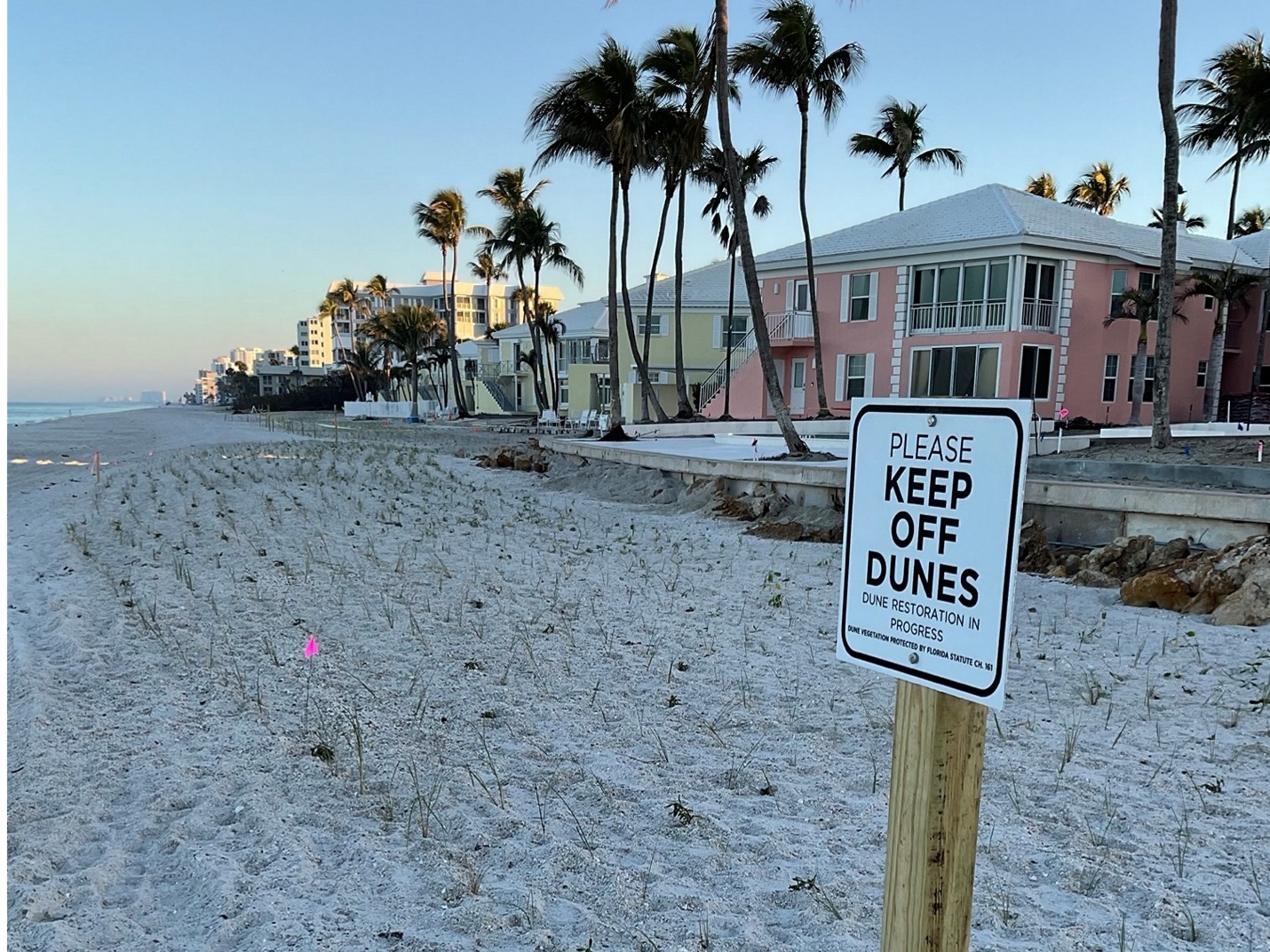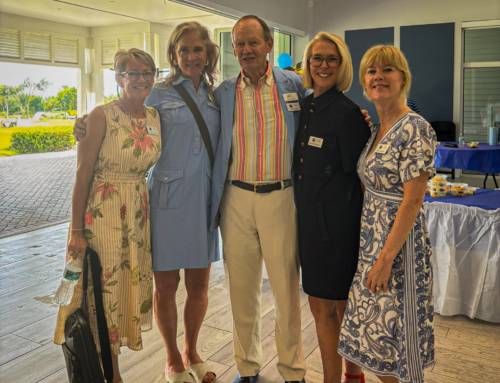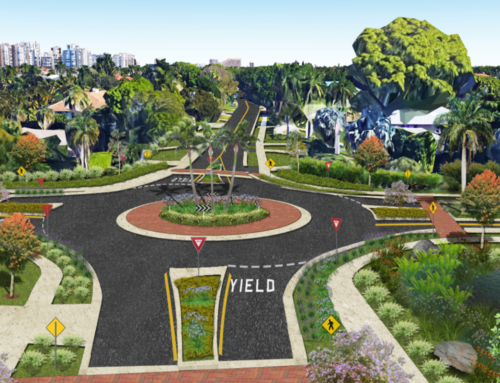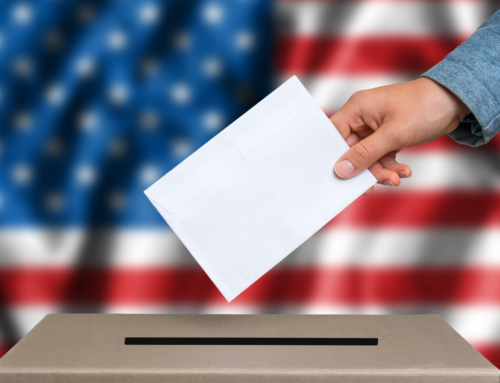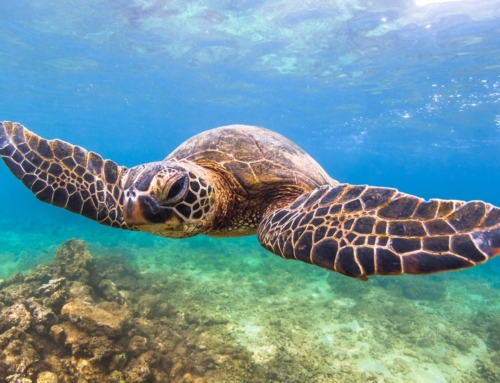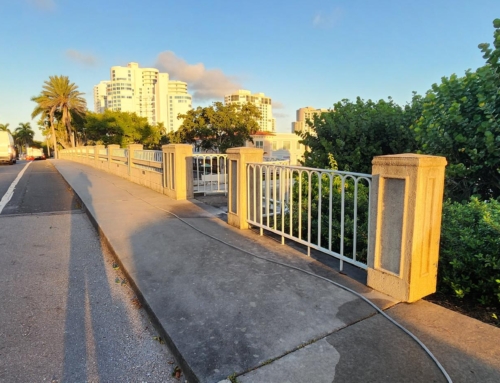By Pam Nicholls and Jay O’Connor, GSAC Board Members
Submit questions or feedback online
Residents along Gulf Shore Boulevard are beginning to see the fruits of the County’s 12-mile-long dune restoration project. By the first week of May, hundreds of thousands of tons of sand will have been dumped, graded and positioned and 1.1 million native seedlings installed to revegetate over 60 acres of beach.
Our dunes are our first line of defense against water and wind damage and now we must take care of them by keeping off of them.
Without human interference or watering, seedlings will fire off roots, find their own water and thrive in this climate. Their roots bind the sand in place and their foliage helps trap and accumulate sand when the wind blows. Plants shed seeds, spawning more vegetation, thus further building up the dune. It’s an environmental, ecological win-win, creating a natural hurdle between us and the Gulf of Mexico.
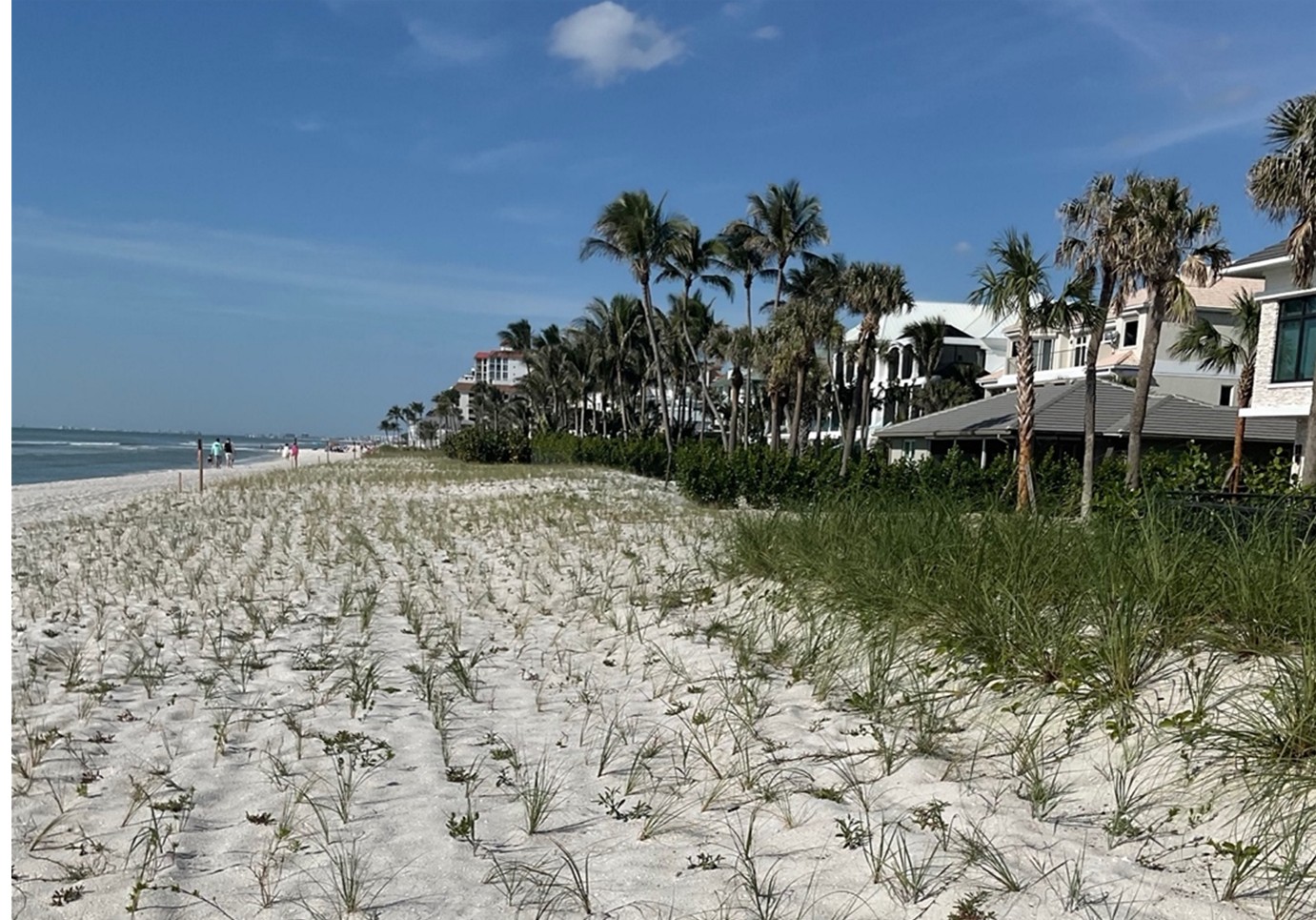
The plants we will see on our dunes are not just the run of the mill, garden variety type dune dweller. In planning for this project, the County mandated that only locally sourced plant genetics could be used. The County naturally turned to Naples Botanical Garden for input and that led to a collaboration with local growers, American Farms.
According to AMF’s Director of Horticulture, Jim Pugh, they were tasked with propagating, growing, and providing to the County almost 250K pots of roughly a dozen different diversity species to complement the Sea Oats that make up 70% of the dune plantings.
“Chad Washburn at the Naples Botanical Garden provided us with the initial stock plants from which we harvested unrooted cuttings,” says Pugh. “We also germinated a small amount of trial seed of several species, but the lion’s share was vegetatively propagated.”
Despite multiple disruptions to the project’s original timeframe, including back to back hurricanes, the delays turned out not to be such a bad thing for the plants, according to Pugh.
“The seedlings were still in amazingly good condition and very well rooted by the time the project did commence in November. Due to the plants’ natural resiliency, they did not seem to suffer as would often be the case with ornamental plants.”
The County’s dune restoration is in line with the strategy developed by the Botanical Garden. It uses an array of native plants that capture and accumulate sand, while also providing wildlife habitat.
So please heed the message on the signs. Rope off the planted areas if you can. Give these plants a chance. Keep off the dunes!
DID YOU KNOW?
According to the NBG The United States suffers from a vast shortage of native plant seed available for restoration following hurricanes, floods, fires, and other natural disasters. Naples Botanical Garden is amassing and storing locally collected, genetically diverse seeds for future ecosystem restoration projects. As of late 2024, the NBG had nearly half a million native plant seeds conserved.
